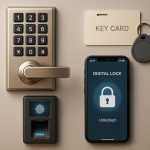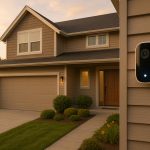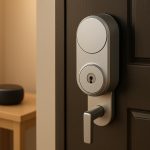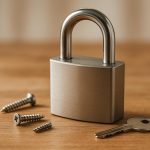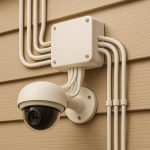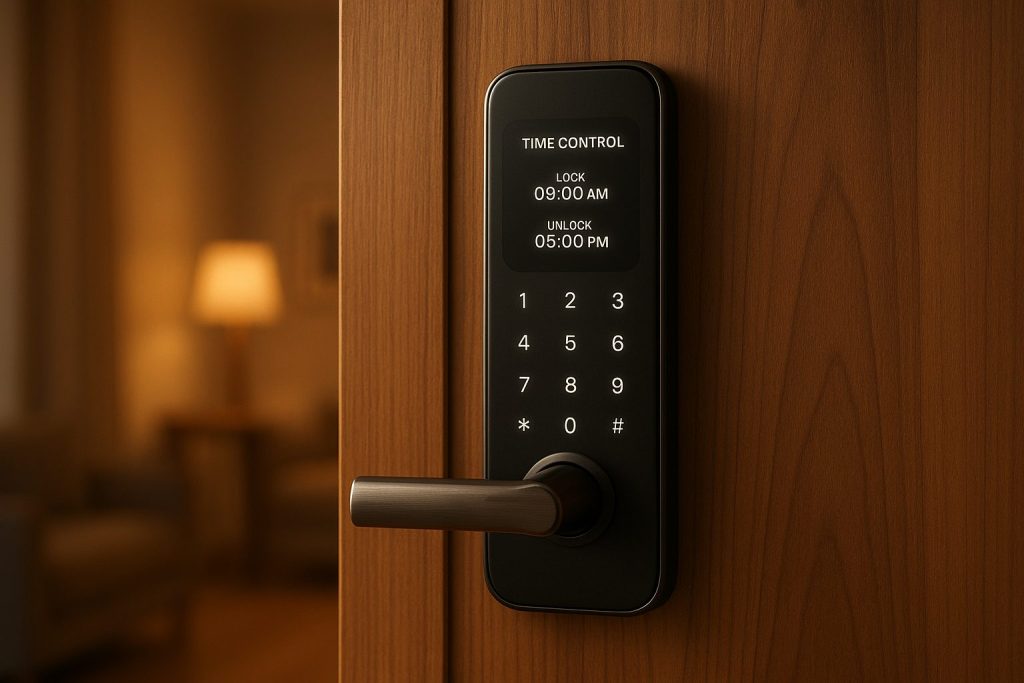Time-controlled locks allow you to schedule when doors can be accessed, providing more control over who enters and when. These locks are ideal for homes, businesses, and high-security environments. Here’s what you need to know:
- Types of Locks: Choose between mechanical, electronic, or smart locks depending on your needs.
- Mechanical: Reliable, no power needed, but limited scheduling options.
- Electronic: Flexible scheduling and logs but requires power.
- Smart: Advanced control with remote access but higher cost and maintenance.
- Key Features:
- Programmable Scheduling: Set access times for days, dates, or holidays.
- Credential Options: Use PINs, RFID cards, or biometrics.
- Remote Access: Manage and monitor locks via apps or networks.
- Cost:
- Mechanical locks are budget-friendly upfront but require manual adjustments.
- Electronic and smart locks cost more but save time and reduce key management hassles.
- Professional Installation: Certified locksmiths ensure proper setup, system reliability, and provide ongoing support.
Quick Tip: For small spaces, mechanical locks may suffice. For high-traffic or commercial areas, electronic or smart locks offer better functionality and tracking.
| Lock Type | Security Level | Initial Cost | Maintenance | Power Dependency | Scheduling Flexibility | Integration Options |
|---|---|---|---|---|---|---|
| Mechanical | Low to Medium | Low | Minimal | None | Limited | None |
| Electronic | Medium to High | Moderate | Moderate | Battery/AC | High | Basic |
| Smart | High | High | High | Network/AC | Very High | Extensive |
Choose the right lock based on your property’s needs, budget, and desired level of control. Professional installation ensures the system works smoothly and securely.
Tuya Smart Lock for Bedroom or Office: Installation & Setup
Key Features of Time-Controlled Locks
Understanding the main features of time-controlled locks can help you choose the right option to meet your security needs.
Programmable Scheduling
Time-controlled locks let you automate access with detailed scheduling options. You can program these locks to grant or deny entry based on the time of day, specific days of the week, or even particular dates. For instance, you might set one schedule for weekdays, another for weekends, and include restrictions during lunch breaks or after-hours access for cleaning crews.
Holiday scheduling is another practical feature. Businesses can block access on dates like Christmas or Thanksgiving, ensuring security during closures. Additionally, temporary schedule overrides allow you to grant emergency access or accommodate special events without altering your regular programming. This flexibility is especially useful for one-time situations or unexpected needs.
Credential Types and User Management
Time-controlled locks go beyond basic scheduling by offering various authentication methods. These include PIN codes, encrypted RFID key cards or fobs, and biometric scanners. Each method can be configured with expiration dates and usage limits, offering tailored access control. Role-based permissions further enhance security by assigning different access levels to groups like employees, contractors, or visitors.
Mobile app integration is another increasingly common feature. It allows users to unlock doors with their smartphones and gives administrators access to detailed logs. For maximum security, biometric options like fingerprint scanners use unique physical traits, eliminating the risks of shared or stolen credentials. While highly secure, these systems often come with higher costs and require more upkeep.
Remote Access and Security Features
Remote access capabilities add an extra layer of convenience and control. With Wi-Fi or Ethernet connectivity, you can monitor activity, adjust schedules, and receive instant alerts for unusual access attempts – all in real time. Audit trails record timestamps and user data, which can be paired with cameras and alarms for a more comprehensive security setup. Features like battery backups and tamper detection help ensure the system remains functional during power outages or attempted breaches, providing peace of mind in critical situations.
Types of Time-Controlled Locks Compared
When choosing a time-controlled lock, it’s essential to weigh the features of mechanical, electronic, and smart systems against your security, budget, and scheduling requirements. Each type has its own strengths and trade-offs, making them suitable for different needs. Let’s break down the key differences to help you make an informed decision.
Mechanical vs. Electronic Locks
Mechanical locks rely on clockwork timers or tumblers to control access. They’re known for their durability and simplicity, making them a good option in areas where power reliability is a concern. However, their biggest drawback is the lack of flexibility. Adjusting access schedules often means manual intervention, such as resetting timers or replacing physical keys, which can be inconvenient if schedules change often.
On the other hand, electronic locks bring more precision and flexibility to the table. They use digital programming, allowing for easy adjustments to schedules and access permissions. These locks can also track entry logs, making them ideal for environments where monitoring access is crucial. However, they do require a stable power source – whether from batteries or a direct connection – and occasional maintenance to keep their electronic components in good working order.
Smart Locks and Advanced Features
Smart locks take things a step further, offering real-time control and remote management via Wi-Fi, Bluetooth, or cellular networks. They can integrate seamlessly with video surveillance systems and building management platforms, providing a comprehensive security solution. Additionally, smart locks support multiple types of user credentials, such as keycards, mobile apps, or biometric data, allowing for highly customized access control. However, these advanced features come with some caveats: they need consistent network connectivity and regular software updates to ensure both functionality and cybersecurity.
Comparison Table
Here’s a side-by-side look at how mechanical, electronic, and smart locks compare across several key factors:
| Lock Type | Security Level (Application) | Initial Cost | Maintenance | Power Dependency | Scheduling Flexibility | Integration Options |
|---|---|---|---|---|---|---|
| Mechanical | Grade 2–3 (best for low-traffic/residential) | Lower | Minimal | None | Limited | None |
| Electronic Standalone | Grade 1–2 (for medium-traffic environments) | Moderate | Moderate | Battery/AC dependent | High | Basic |
| Smart Networked | Grade 1 (ideal for high-traffic commercial) | Higher | Higher | Requires network & AC | Very High | Extensive |
Choosing the Right Lock for Your Needs
The choice between these lock types largely depends on your specific requirements. For instance, high-traffic commercial spaces like hospitals or schools often demand Grade 1 electronic or smart locks. These systems can handle frequent use while offering advanced access control features. In contrast, smaller offices or residential properties might find Grade 2 or 3 mechanical locks sufficient, especially if power dependency or high costs are a concern.
It’s also important to consider long-term costs. While mechanical locks are typically cheaper upfront, they can lead to additional expenses over time due to the need for physical key replacements and manual adjustments. Smart locks, though more expensive initially and in terms of maintenance, can offset these costs with their automated management and streamlined credential control. By understanding these differences, you can select a lock that aligns with both your security goals and operational needs.
sbb-itb-643e28e
Cost and Budget Planning
Once you’ve reviewed the features of different lock systems, it’s time to weigh the total cost of ownership. This means looking beyond the initial price tag to include installation, maintenance, and potential long-term savings.
Price Ranges for Different Lock Types
- Mechanical locks: These are the most budget-friendly option. Basic models are quite affordable and simple to install, though advanced versions can cost more.
- Electronic standalone locks: These come with a higher price tag compared to mechanical locks. Costs depend on features like programming capabilities, audit trails, and user management options.
- Smart networked locks: These tend to be the most expensive. Basic models include standard connectivity, while enterprise-level systems – with features like biometric authentication and advanced management software – drive up the price significantly.
Don’t forget to account for additional expenses like power supplies, network upgrades, and software licensing, especially for commercial setups. These factors can substantially impact your overall budget.
Long-Term Savings and Security Benefits
Investing in high-end time-controlled locks can lead to significant long-term savings. For instance, digital credentials eliminate the need for frequent key replacements or rekeying when staff changes occur. This alone can cut down on recurring costs tied to traditional key management.
Advanced systems also bolster security by restricting access during off-hours and keeping detailed logs of all entries. This minimizes risks like theft, property damage, and operational interruptions.
Automation is another major benefit. Features like remote access management reduce the time and effort spent on distributing and collecting keys, freeing up your staff for other tasks. On top of that, many insurance providers may offer premium discounts for businesses that implement advanced access control systems, further offsetting costs.
Maintenance needs vary as well. Mechanical locks generally require little upkeep, while electronic and smart locks may need occasional battery replacements, software updates, or network servicing.
When planning your budget, think long-term. While a more advanced system might require a higher initial investment, the savings on maintenance, reduced administrative work, and enhanced security often make it a more cost-effective choice over time.
Professional Selection and Installation
Time-controlled locks require precise installation by skilled professionals. Without proper setup, you risk damaging expensive equipment or leaving your property vulnerable to security breaches.
The Role of Certified Locksmiths
Certified locksmiths bring the expertise needed to handle more than just the basics of installation. They understand the technical details – like ensuring a stable power supply and integrating with existing networks – that help avoid costly mistakes.
Before installation, professionals assess your property in detail. They check door frames, wiring, and overall structure to recommend a lock system that fits your specific needs. This upfront evaluation eliminates surprises, such as discovering compatibility issues after you’ve already invested in equipment.
Take Sherlock’s Locksmith in Pittsburgh, PA, for example. Their certified technicians specialize in advanced security systems, including access control, keyless entry, and biometric locks. They ensure every installation follows manufacturer guidelines and meets local building codes.
Once the system is installed, certified technicians meticulously calibrate and test the locks. They verify scheduling functions, backup activations, and overall performance to ensure everything operates smoothly. Beyond just setting up the system, they provide valuable advice to keep your system secure and dependable.
Expert Guidance and Ongoing Support
The need for professional support doesn’t end after installation. Continuous expert guidance is essential for maintaining the performance and reliability of your time-controlled locks. Skilled locksmiths help you navigate the wide array of lock options, ensuring you choose features that align with your actual needs – not just the most expensive system on the market.
During the selection process, professionals explain how different features work in real-world scenarios. They can guide you on credential types, cloud-based management options, and how various systems handle challenges like power outages or network failures.
Regular maintenance is another area where professional support proves invaluable. Electronic and smart locks require periodic updates, battery replacements, and recalibration. Many locksmiths offer scheduled maintenance services to keep your system running efficiently and avoid unexpected breakdowns.
When problems arise, having direct access to knowledgeable technicians can save time and frustration. Instead of wrestling with confusing manuals or unhelpful customer service, you can rely on experts familiar with your specific setup. They can quickly diagnose issues, perform repairs, and restore your system with minimal downtime.
Additionally, many locksmith services provide staff training to ensure your team knows how to use the system properly. This education reduces user errors that could compromise security or damage the equipment, while also helping your staff make the most of the system’s features.
Investing in professional selection and installation pays off in the long run. It leads to more reliable systems, lower maintenance costs, and better overall security. With expert installation and ongoing support, you protect your investment while ensuring your property stays secure for years to come.
Conclusion and Key Takeaways
This guide has explored the critical features, comparisons, and cost considerations to help you select the right time-controlled lock. Making the best choice involves carefully assessing your specific needs to create a secure and efficient access control solution.
Start by identifying your unique requirements. The access control needs of a small office with just a handful of employees are entirely different from those of a sprawling commercial facility with multiple departments and varying levels of access. Matching the lock system to your property’s scale and usage is a crucial first step.
Next, consider both the upfront and long-term costs. While electronic and smart locks may have higher initial price tags compared to mechanical options, their automation features, security logs, and lower maintenance demands often translate into significant savings over time. Don’t forget to factor in potential insurance discounts for businesses that adopt advanced access control measures.
Professional installation and ongoing support are equally important. A properly installed system can run smoothly for years, while a poorly installed one can become a constant headache. Modern time-controlled locks often require expertise in areas like power supply management and network integration, making professional assistance indispensable.
Once the system is in place, user training and effective management are key to getting the most out of your investment. Make sure your staff understands how to use the lock system to its full potential, ensuring both security and efficiency.
Investing in high-quality locks, combined with expert installation and proper training, can enhance security, reduce costs, and ensure long-term reliability. Take the time to evaluate your options, consult experienced professionals, and choose a system that can adapt to your evolving needs.
FAQs
What are the main differences between mechanical, electronic, and smart time-controlled locks in terms of security and upkeep?
When it comes to security and maintenance, mechanical, electronic, and smart time-controlled locks each bring their own set of advantages and challenges.
- Mechanical locks stand out for their durability and dependability. They require little upkeep, making them a low-maintenance option. However, they lack modern features and are more susceptible to physical tampering.
- Electronic locks step things up with programmable time controls, adding an extra layer of security. On the flip side, they might need occasional battery replacements or some electrical maintenance to keep them running smoothly.
- Smart locks take convenience to another level. With features like remote access and integration with smart home systems, they offer unmatched flexibility. But, they rely on regular software updates and often demand more frequent attention to ensure they’re functioning correctly.
The best choice ultimately comes down to your specific security requirements, budget, and how much effort you’re willing to put into maintaining the system.
What’s the best way to choose a cost-effective lock for my business, balancing upfront costs and long-term savings?
To find a budget-friendly lock for your business, focus on strength and long-term value. While options like high-security or electronic locks might cost more initially, they can actually save you money over time by cutting down on the need for frequent repairs, rekeying, or replacements.
You might also want to look into systems like master key setups or electronic access controls. These options make managing access easier and can boost security, which may help reduce ongoing costs. By emphasizing quality and the overall lifespan of the lock instead of just the upfront price, you can achieve better protection and savings for your business over time.
Why is it important to have time-controlled locks professionally installed, and how does it improve security and reliability?
Professional installation of time-controlled locks is key to ensuring they work as intended and last longer. A certified locksmith can handle the setup with precision, minimizing the chance of mistakes that might weaken security or cause the lock to malfunction.
When installed correctly, these locks deliver consistent performance and provide added peace of mind. Proper setup eliminates potential weak points, helping to prevent unauthorized access and strengthening the overall security of your property.



